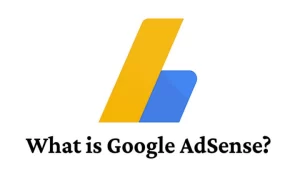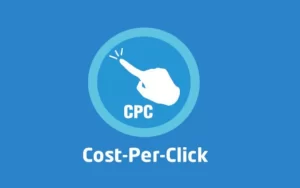In an age when digital initiatives are pushing marketing strategies, then programmatic expertise stands on its own. Automating ad space buying and selling has revolutionized how brands efficiently and precisely get to their customers. Programmatic advertising knowledge is vital for any marketer and business owner who wants an edge over their competition. This blog article will show how big brands have used programmatic advertising with 10 great examples.

Spotify: Personalized Playlists for Every Listener
Spotify has programmed advertising to deliver the most user-interest-based ads. It uses listening behavior data as well as location and user-demographic information to convey the type of ads that appeal to the individual listener.

Strategy Implementation:
- Data Utilization: Spotify collects data about its users in depth to know what the users would like.
- Personalization: It makes ads personalized concerning which playlist the user has listened to today as well as at what time of day and even with the mood he is listening to, which kind of ad will serve the user’s need.
- Dynamic Creative Optimization: It adjusts ad creatives in various real-time options using DCO.
McDonald’s: Geofencing for Maximum Impact
McDonald’s also utilized programmatic advertising to drive foot traffic to its restaurants using geofencing technology. In this case, they targeted customers within the specified geographic area and showed the ads when it was most relevant and could drive action.

- Geofencing: McDonald’s created a perimeter around each of its restaurant locations.
- Real-Time Bidding: The location-based ads used RTB to launch the ads to whoever was present in the geofenced location.
- Mobile Targeting: The ads were oriented towards smartphones to reach out to consumers on the move.
Google: Programmatic Guaranteed for High-End Inventory
Google utilizes programmatic guaranteed deals to ensure that they get premium ad slots beforehand. They are always certain about their placements, ensuring that their brand is visible.

Strategy:
- Premium Programmatic Guaranteed: they make high-profile placements ahead of the actual promotion.
- High-quality placements: The company ensures that it places its advertisement on platforms that reach the audience.
- Target Audience: Since the platform holds enough data to target, they ensure they get the audience to see the video.
Coca-Cola: Real-Time Personalization
Programmatic advertising is used by Coca-Cola in an innovative way, which is real-time personalization allowing the company to connect with consumers at a personal level. The company can achieve this through data analysis and real-time ad content customization, which makes the interaction more real and meaningful for customers.

Strategy:
- Leveraging Data: Coca-Cola uses data to understand consumer preferences.
- Dynamic Ads: Due to the data on the spot the ad message is different.
- Context Relevant: The ads match the user’s current experience by personalizing them.
Lacoste: Cross-Device Targeting
Lacoste uses programmatic advertising to ensure that the company’s messages are constant and consistent, staying in front of the consumer at all points of his journey and despite the device that he used. In this way, the company can maximize the probability of the person receiving the company’s message, with his common behavior and preferences understood.

Strategy:
- Cross-Device Identification: Lacoste uses technology that identifies a person using the same device as those who have already visited the website.
- Consistent Messaging: Throughout his journey, the ads provide the same message and feeling across all devices.
- Behavioral Targeting: The ads are delivered to the user based on his behavior and preferences.
Airbnb: Lookalike Targeting for Expansion
Airbnb uses lookalike targeting to effectively deliver ads to new potential customers who are similar to the characteristics of their existing users. This allows them to expand their audience while remaining relevant.
Strategy:
- Lookalike Modeling: During the custom audience creation process, Airbnb will create lookalike audiences matching their most valuable customers.
- Precision Targeting: Airbnb takes ads to people who appear like their top customers.
- Scalable Approach: This technique in turn holds up the scale for their campaigns rigidly.
Amazon: Retargeting to Boost Sales
Amazon’s programmatic ads are designed mainly to retarget users who are interested in their wares. By reminding prospective customers that the piece of jewelry they are looking at today is still available online, tens of millions of dollars in monthly sales will automatically follow.
Strategies:
- Amazon Behavioral Retargeting: Amazon tracks user behavior to serve relevant ads.
- Dynamic Product Ads: Ads featuring products users have already touched.
- Personal Recommendations for You: Amazon’s not-yet-public knowledge database contains product recommendations tailored to people’s tastes.
Nike: Contextual Advertising for Relevance
Nike uses contextual advertising to make sure that their ads are relevant to the content being consumed by its target audience. This approach enhances the user experience and increases ad engagement.

Strategy:
- Contextual Targeting: Nike can analyze the content of web pages to deliver relevant ads.
- Enhanced User Experience: Ad placement with the surrounding content.
- Brand Alignment: Nike’s ads are in tune with their brand values and messaging.
Kellogg’s: Data-Driven Creative Optimization
Kellogg’s uses data-driven methodologies to optimize their advertising performance continually. Always assure that you optimize the campaign for success, from insight-based creative testing to production outcome.
Strategy:
- A/B Testing: Kellogg’s does split testing to compare different ad creatives.
- Data Analysis: Most of the ad content has lost itself in a maze by leveraging the insights of their data.
- Continuous Improvement: Ad creatives must be updated at regular intervals for better performance.
BMW: High-Impact Video Advertising
The marketing team creates high-impact video ad campaigns using BMW ads, which are lovely and moving marketing materials in their own right. Using programmatic platforms to serve videos that emanate beauty, really works off on the intensely emotional connection with products, and offers another platform for people’s memories.
Strategy:
- Programmatic Video: BMW uses programmatic platforms to deliver video ads.
- Visual Storytelling: Ads visually tell stories that are gripping both for the eye and in terms of their content.
- Audience Targeting: Video ads are served specifically to individual segments.
Conclusion
Thanks to programmatic advertising, which provides precise, efficient, and highly scalable promotion opportunities that are hugely sought after by clients these days. With lessons learned from these ten top examples, more and more marketers and business owners are using programmatic advertising as a way of driving their campaigns for success. Are you ready to boost your advertising to the next level? Start using programmatic advertising today and open up new possibilities for your brand.


